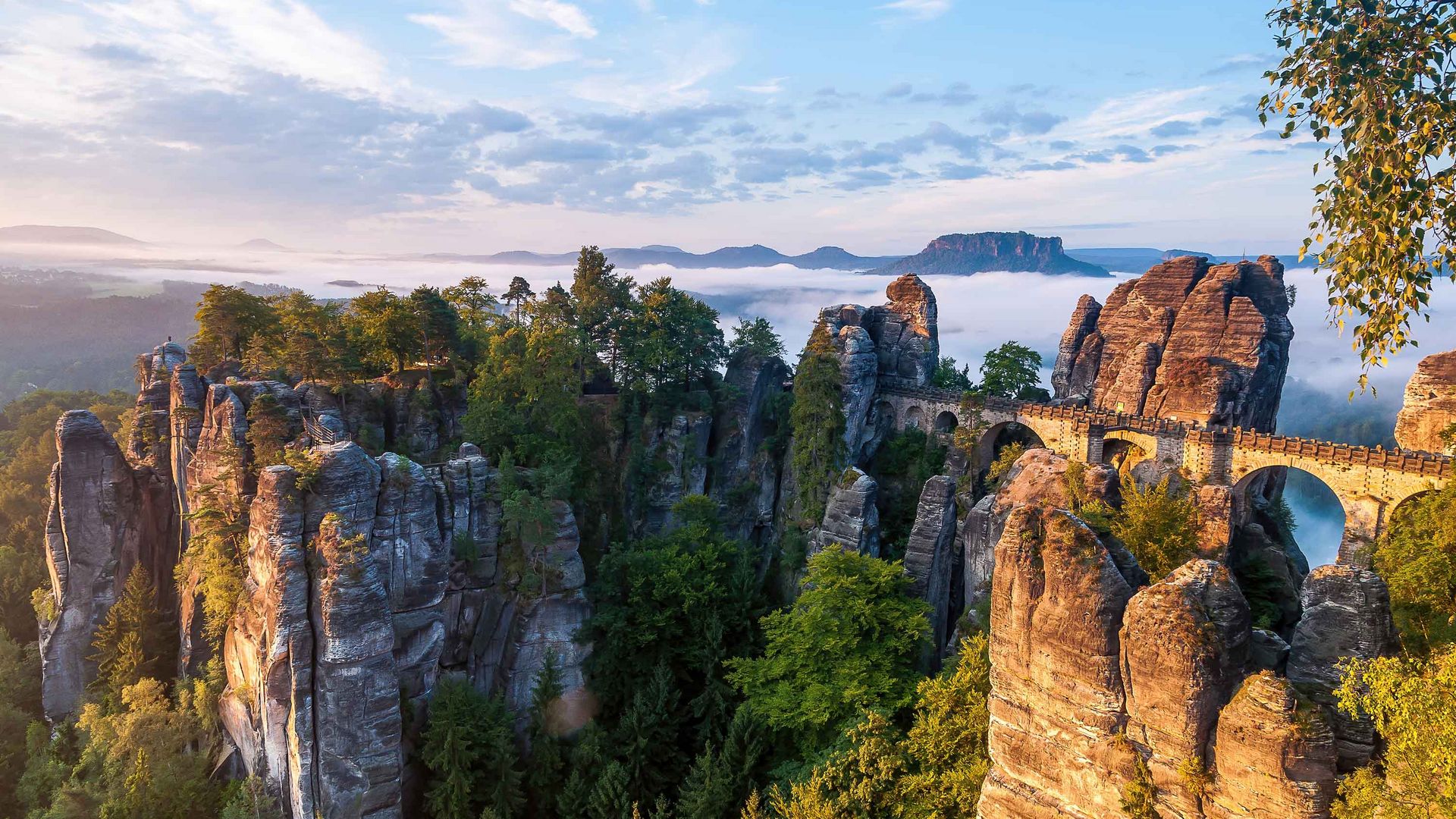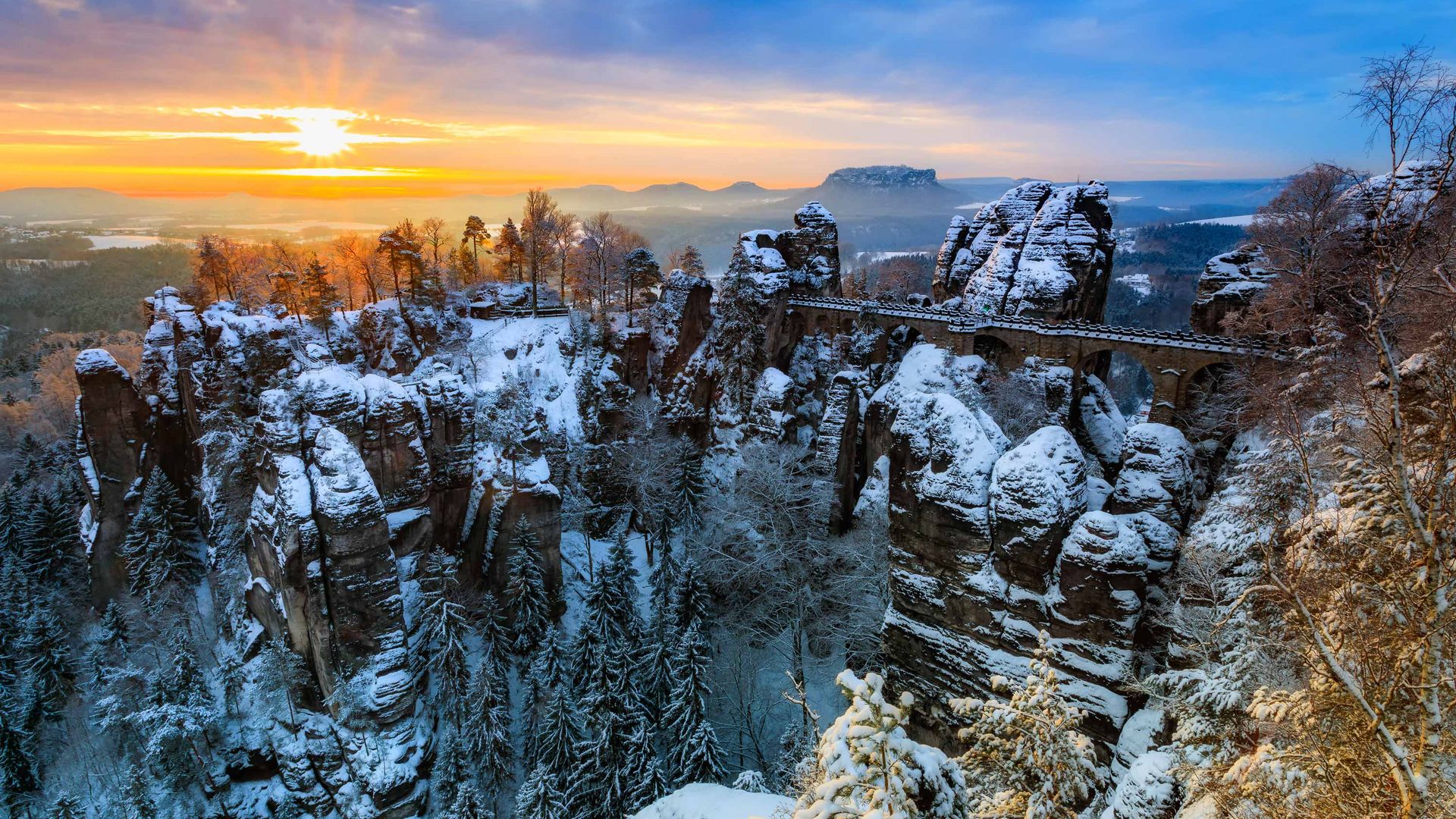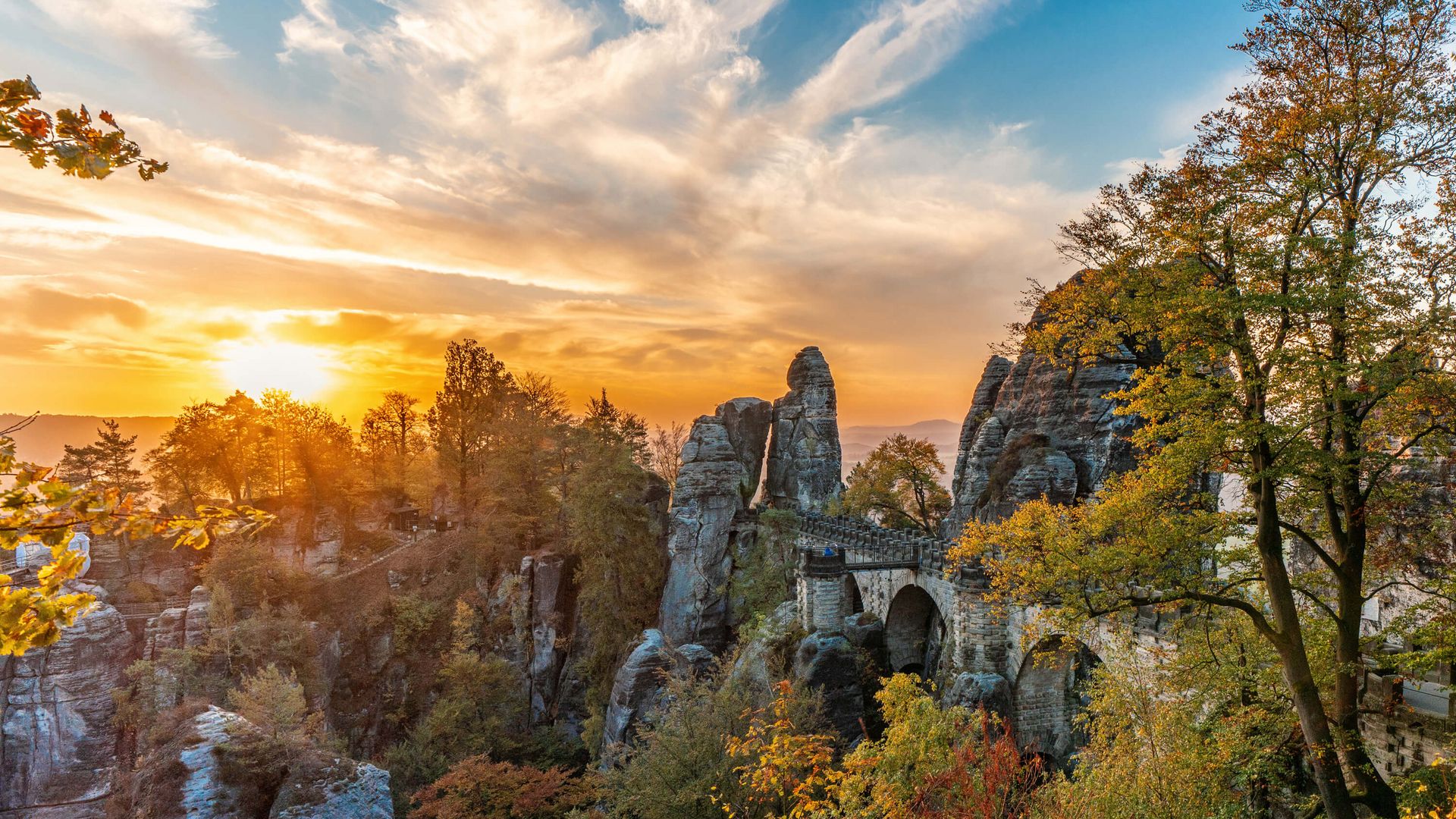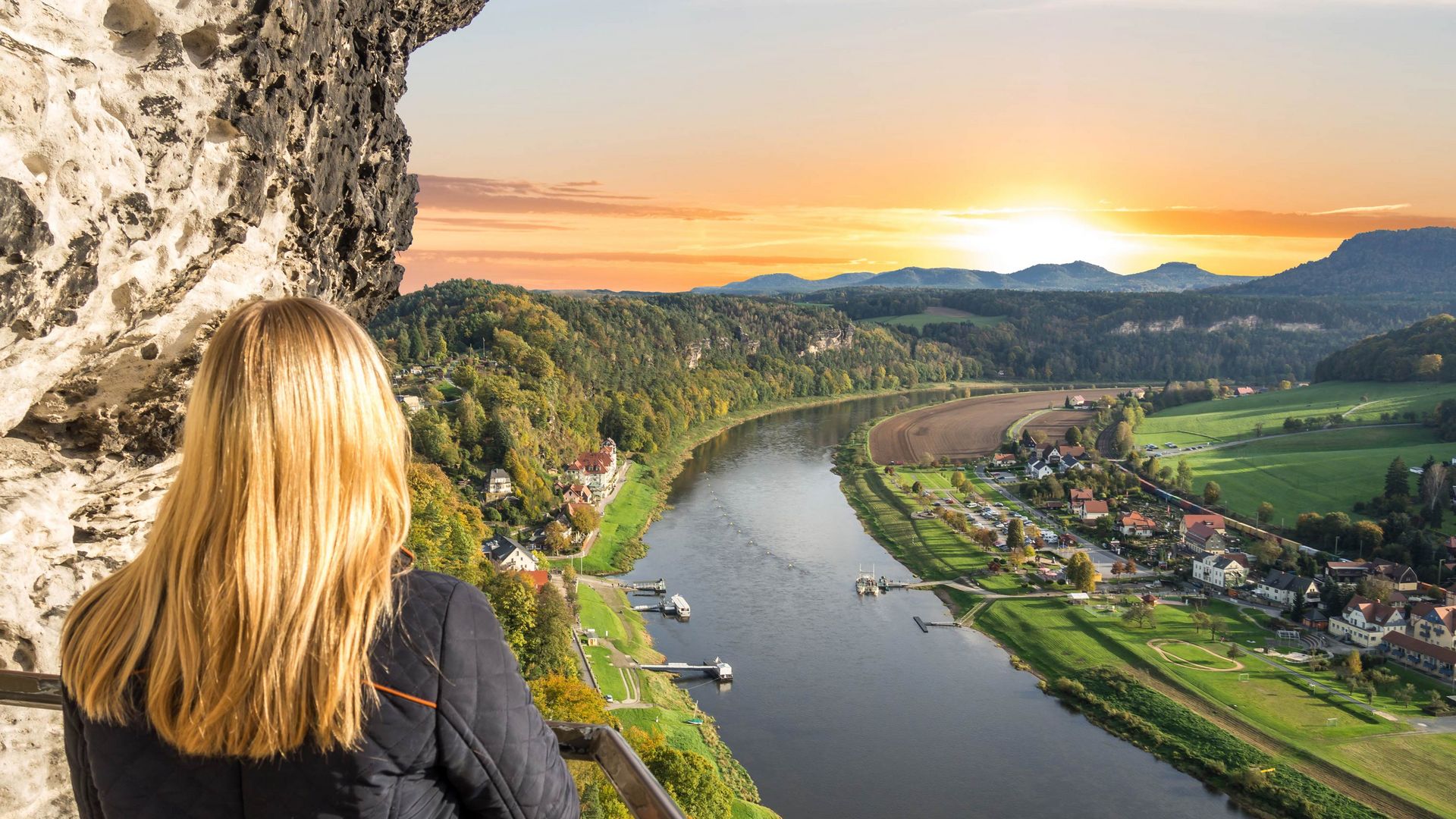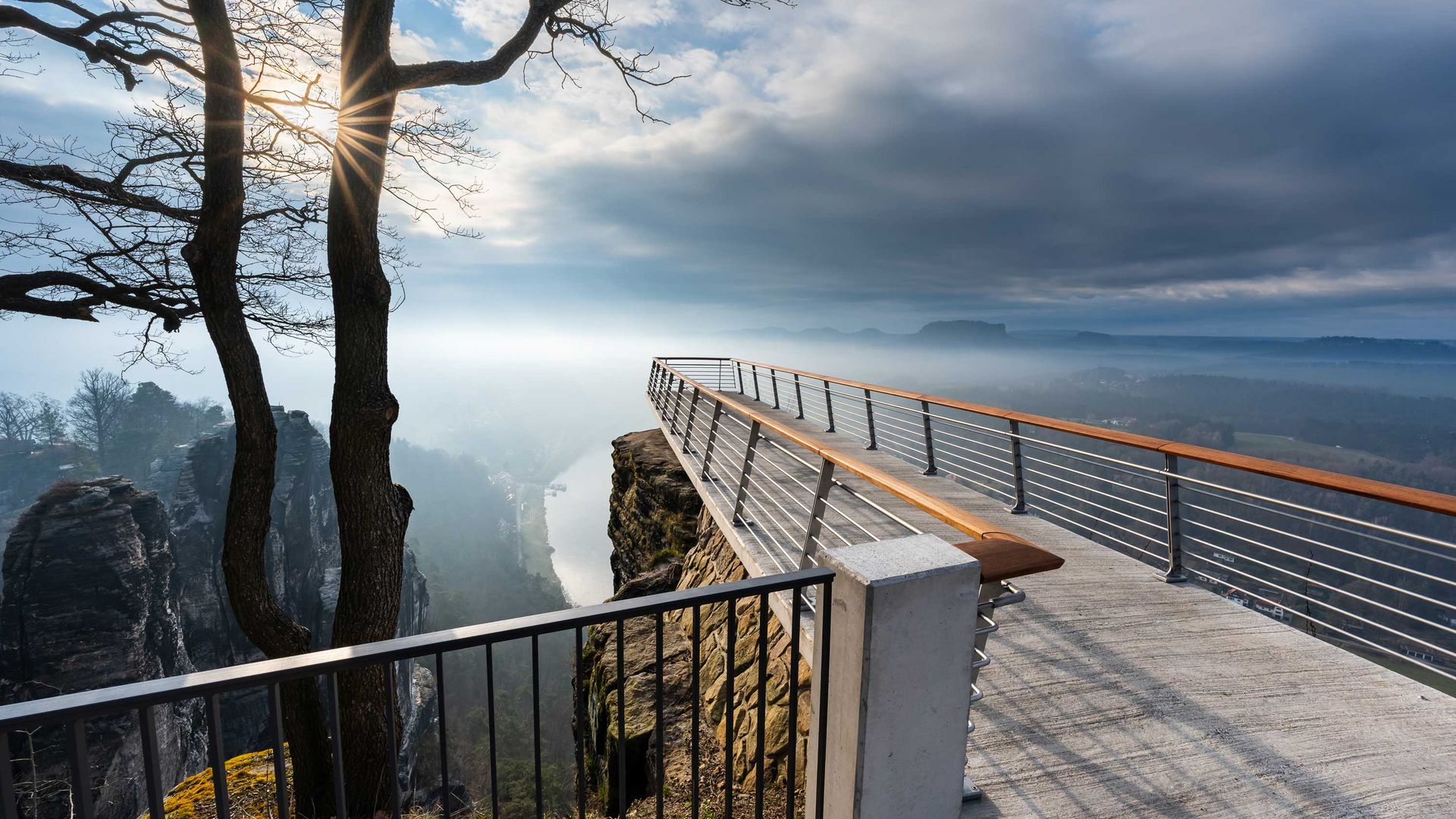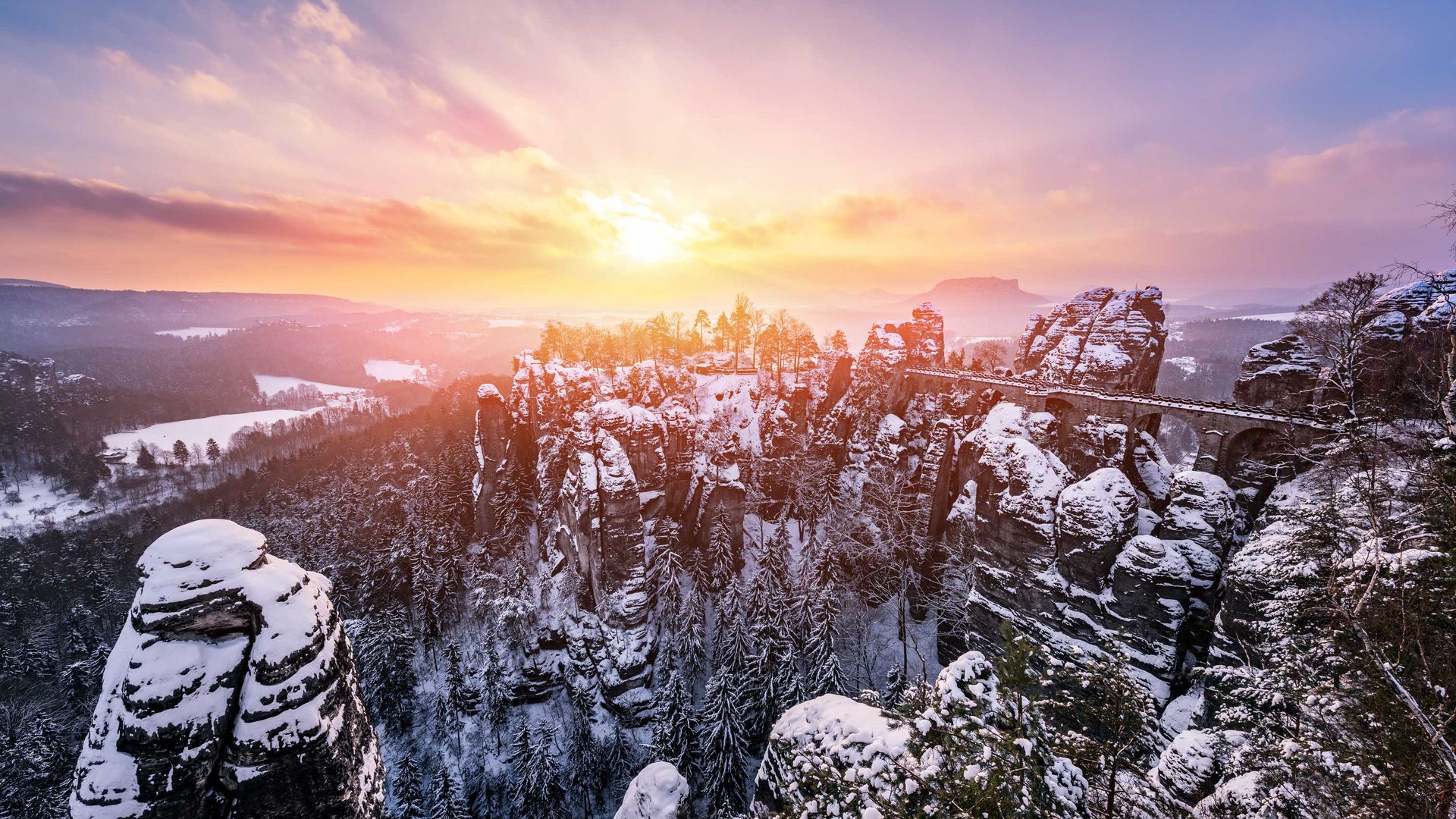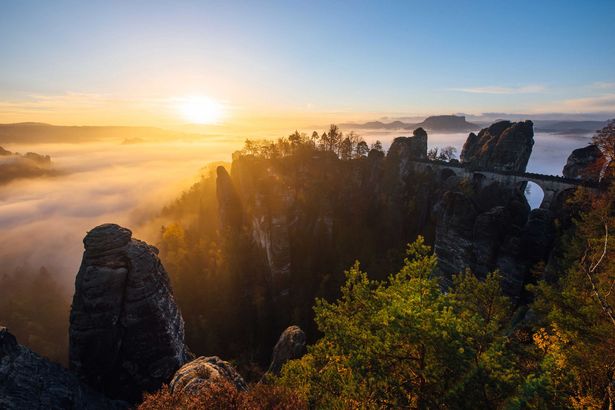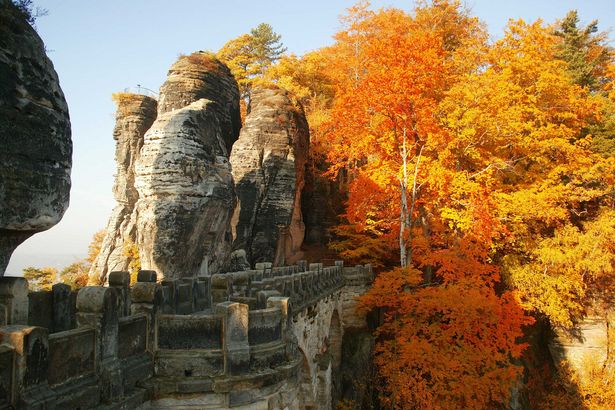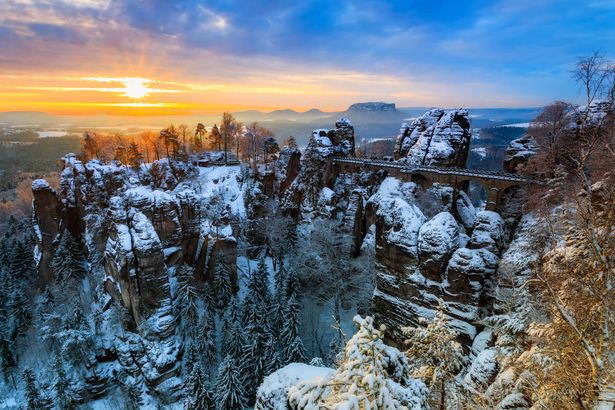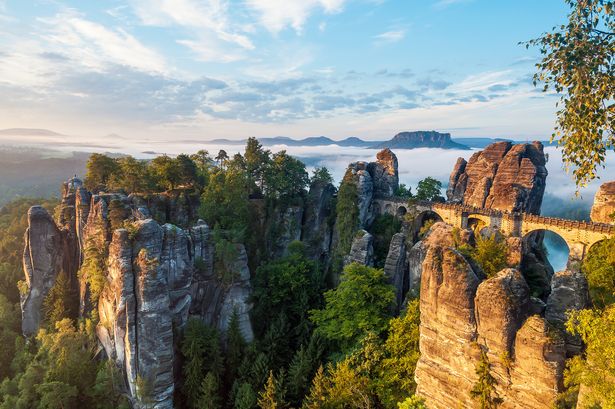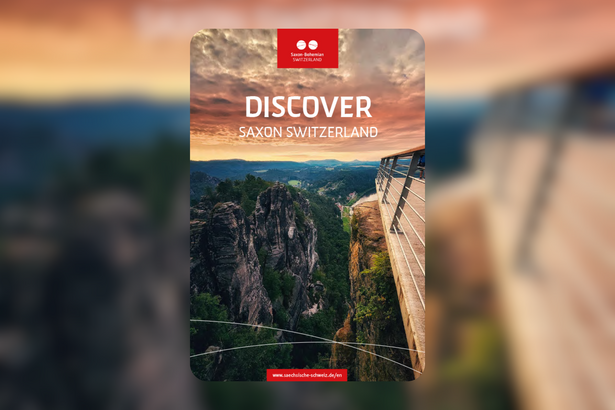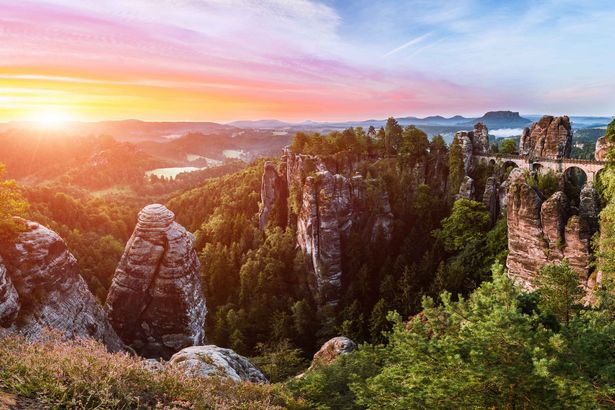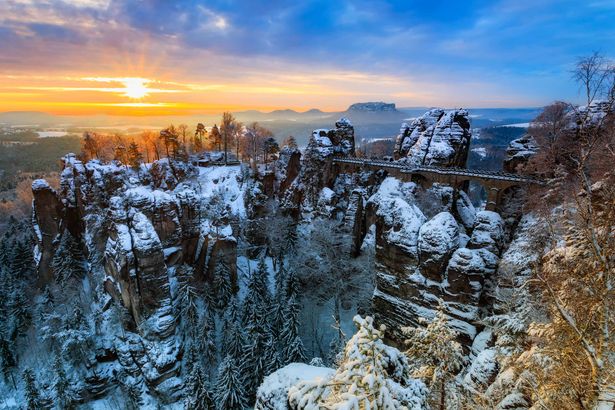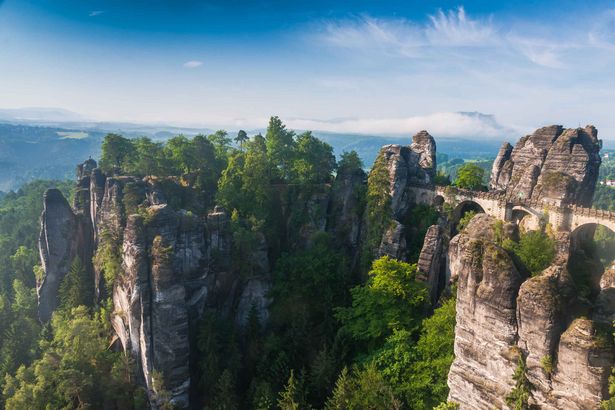Le pont de Bastei (Basteibrücke) est la formation rocheuse la plus emblématique de la Suisse saxonne (Sächsische Schweiz), située dans la région de Saxe, en Allemagne. Au cœur des montagnes de grès de l’Elbe (Elbsandsteingebirge), ce monument naturel offre un paysage spectaculaire qui attire des visiteurs du monde entier tout au long de l’année.
Un paysage chargé d’histoire et de légendes
Il y a plusieurs siècles, des chevaliers-brigands parcouraient ces montagnes. Plus tard, des artistes romantiques comme Caspar David Friedrich furent fascinés par ces formations rocheuses uniques. Aujourd’hui, le pont de Bastei et ses environs sont l’une des destinations les plus visitées de l’Allemagne de l’Est. Depuis la plateforme panoramique de Basteiaussicht, rouverte en 2023, on peut admirer une vue à couper le souffle sur la vallée de l’Elbe, le mont Lilienstein et la forteresse de Königstein.
Le pont de Bastei – Une icône architecturale au cœur de la nature
Long de 76,5 mètres, le pont de Bastei relie de majestueuses colonnes rocheuses. Construit en pierre en 1851, il remplaça un ancien pont en bois datant de 1824. En le traversant, on accède aux ruines de la forteresse troglodytique de Neurathen (Felsenburg Neurathen), le plus grand château médiéval de la région. L’accès au pont et aux points de vue est gratuit, seule la visite des ruines est payante.
Des points de vue inoubliables
Outre le belvédère principal, la région regorge de panoramas à ne pas manquer :
Ferdinandstein : vue impressionnante juste avant le pont
Kanapee-Klippe et Tiedge-Aussicht : vues magnifiques en descendant vers le village de Rathen
Pavillon-Aussicht et Wehlstein-Aussicht : points d’observation uniques tout au long du sentier
Comment se rendre au pont de Bastei
En transport en commun, plusieurs lignes régionales (237, 239, 254) relient Pirna, Wehlen, Hohnstein et Bad Schandau à la Bastei, en particulier les week-ends et jours fériés en été.
En voiture, il suffit d’entrer l’adresse 01847 Lohmen dans votre GPS. Deux parkings principaux sont disponibles :
P+R Rathewalde : moins cher, avec navette jusqu’à la Bastei
Parking près du site : plus proche et plus confortable, légèrement plus onéreux
Randonnée dans la Suisse saxonne
La région est idéale pour les amateurs de randonnée. L’un des itinéraires les plus appréciés est appelé le « Triangle d’or » : il relie Stadt Wehlen, le pont de Bastei et Kurort Rathen via le spectaculaire sentier des Schwedenlöcher. Ce circuit combine nature sauvage, points de vue majestueux et vestiges historiques.
Histoire du tourisme à la Bastei
Le tourisme à la Bastei remonte à 1797, avec de simples vendeurs ambulants. En 1812, les premières cabanes furent construites pour les visiteurs, et en 1826, la première auberge vit le jour. Depuis, les infrastructures ont été développées de manière durable, dans le respect de la nature environnante. Aujourd’hui, les sentiers bien entretenus, les hébergements confortables et les plateformes d’observation font de la Bastei une destination parfaite pour les amoureux de paysages, de nature et de photographie.
Conseil : visitez la Bastei en hiver pour découvrir une atmosphère magique entre neige et lumière dorée du coucher de soleil. Chaque saison y offre un charme particulier et une nouvelle expérience visuelle.
